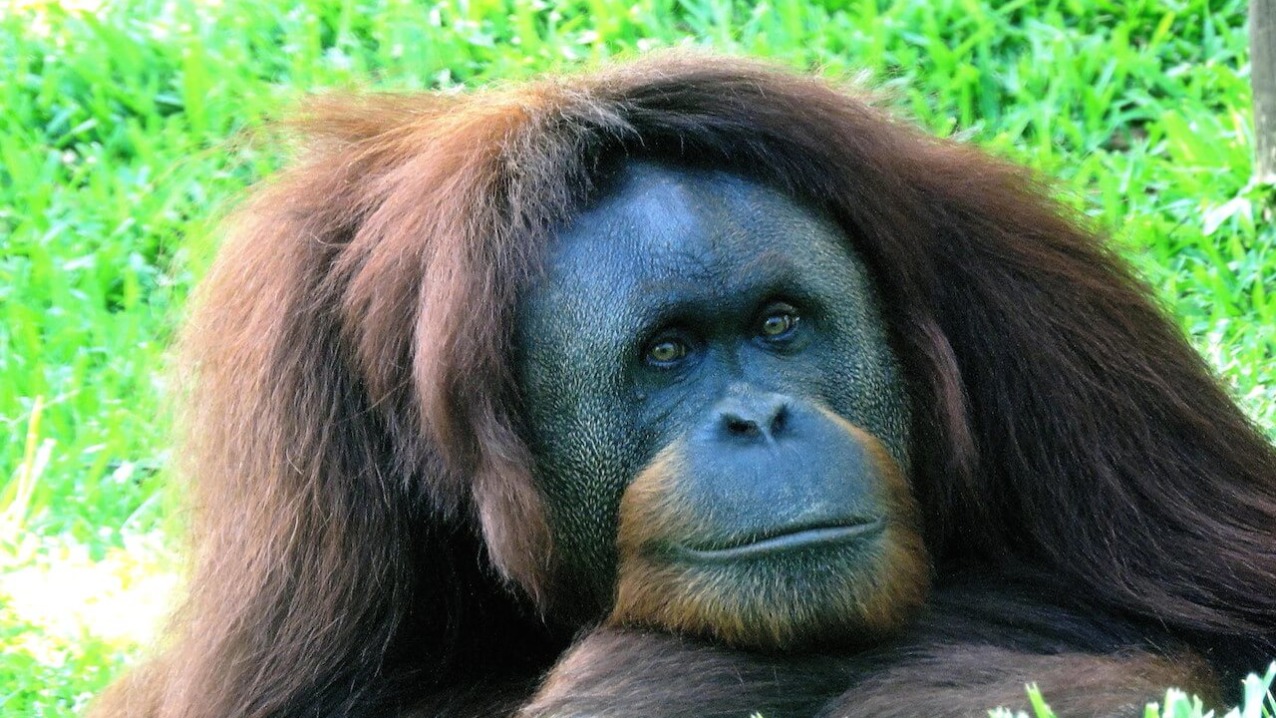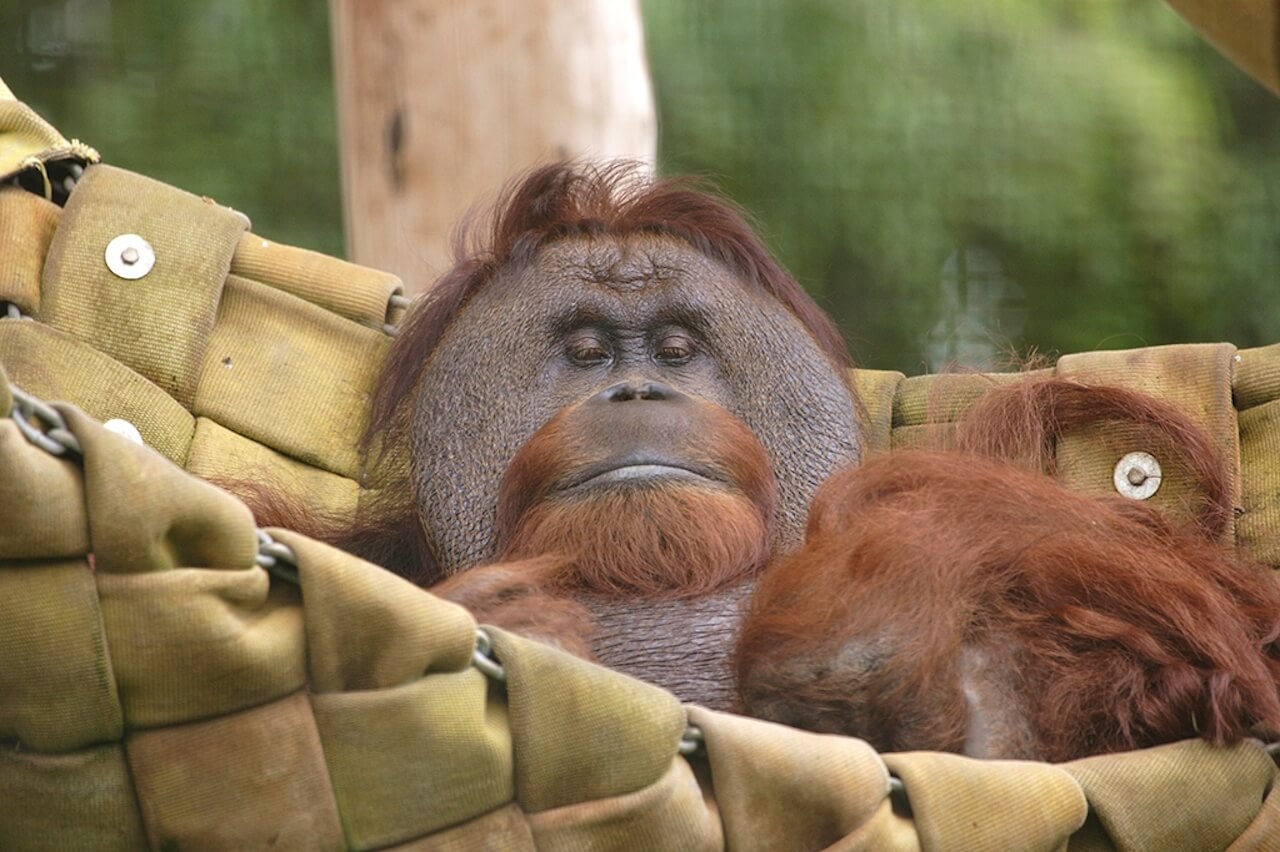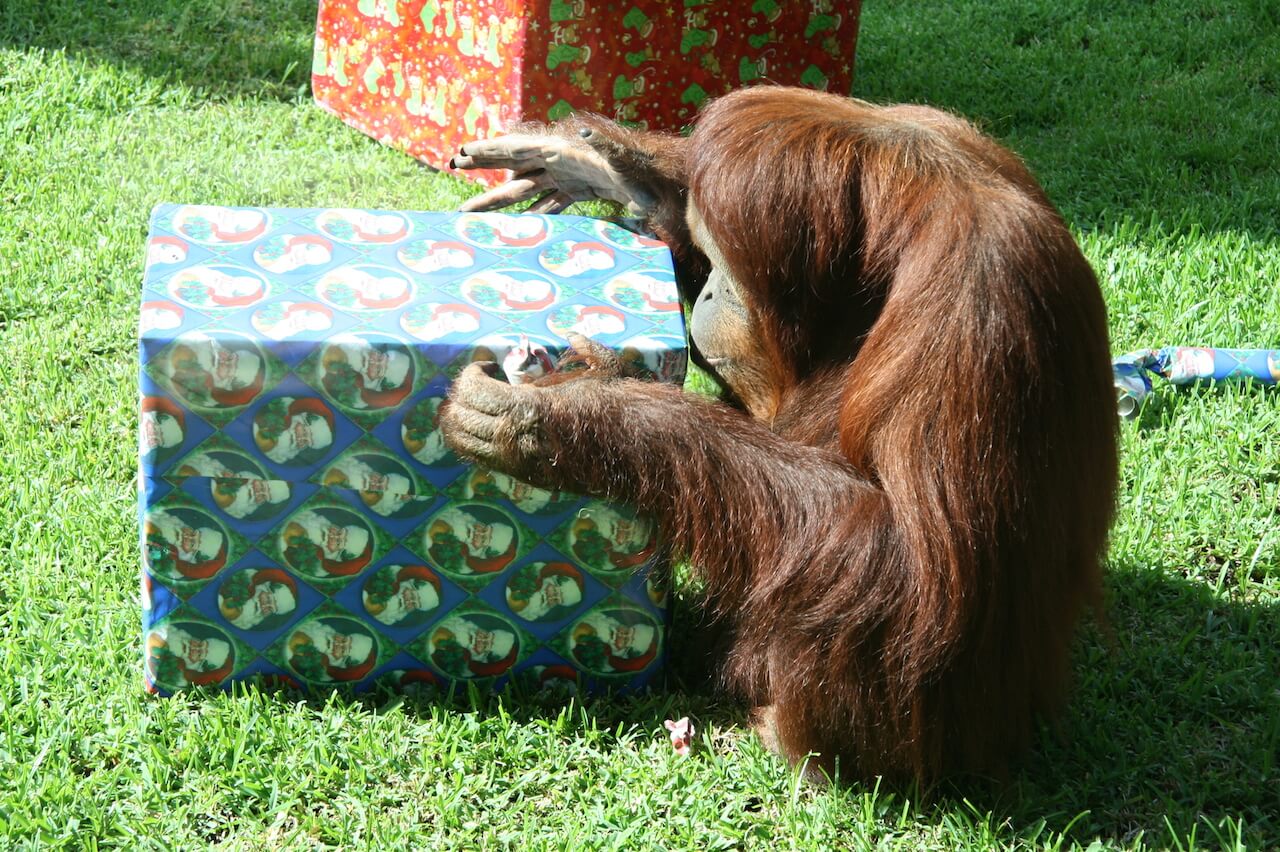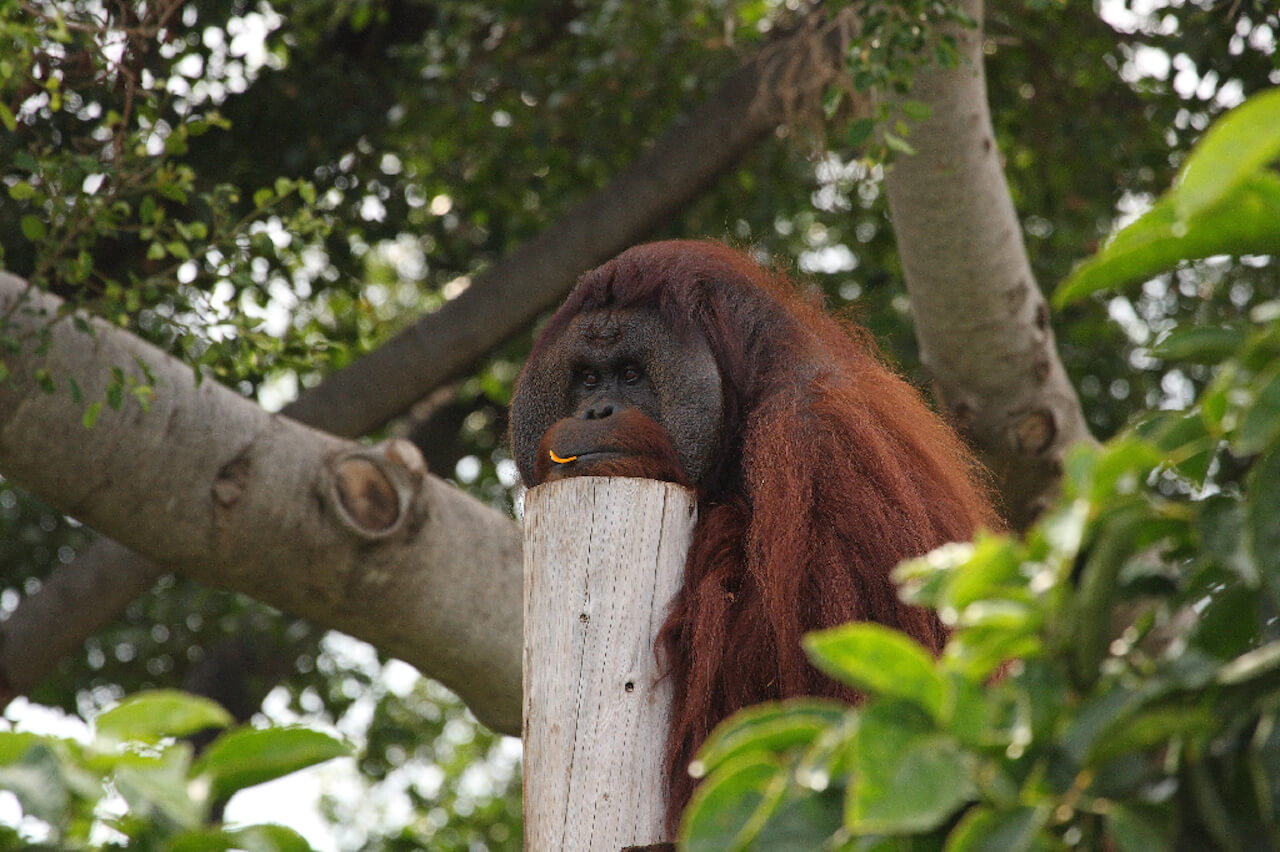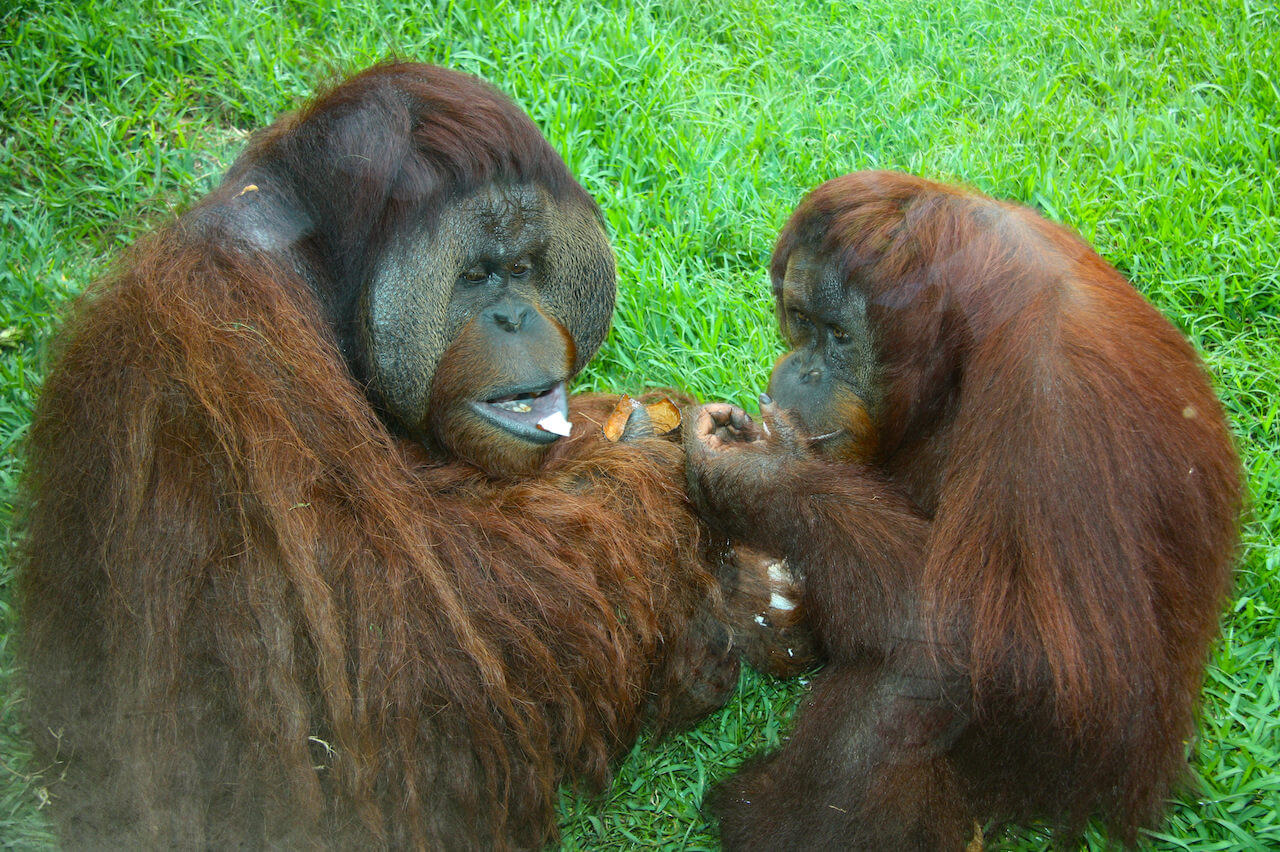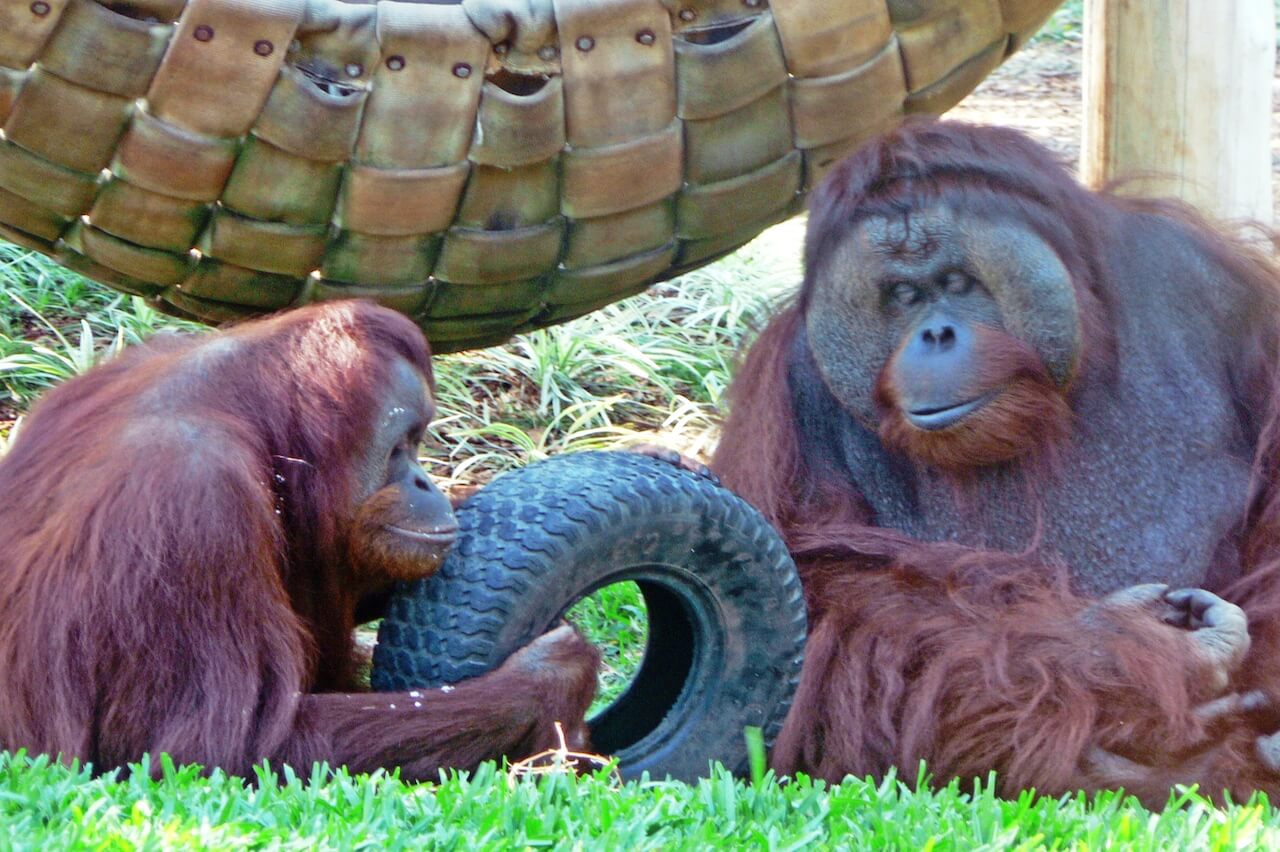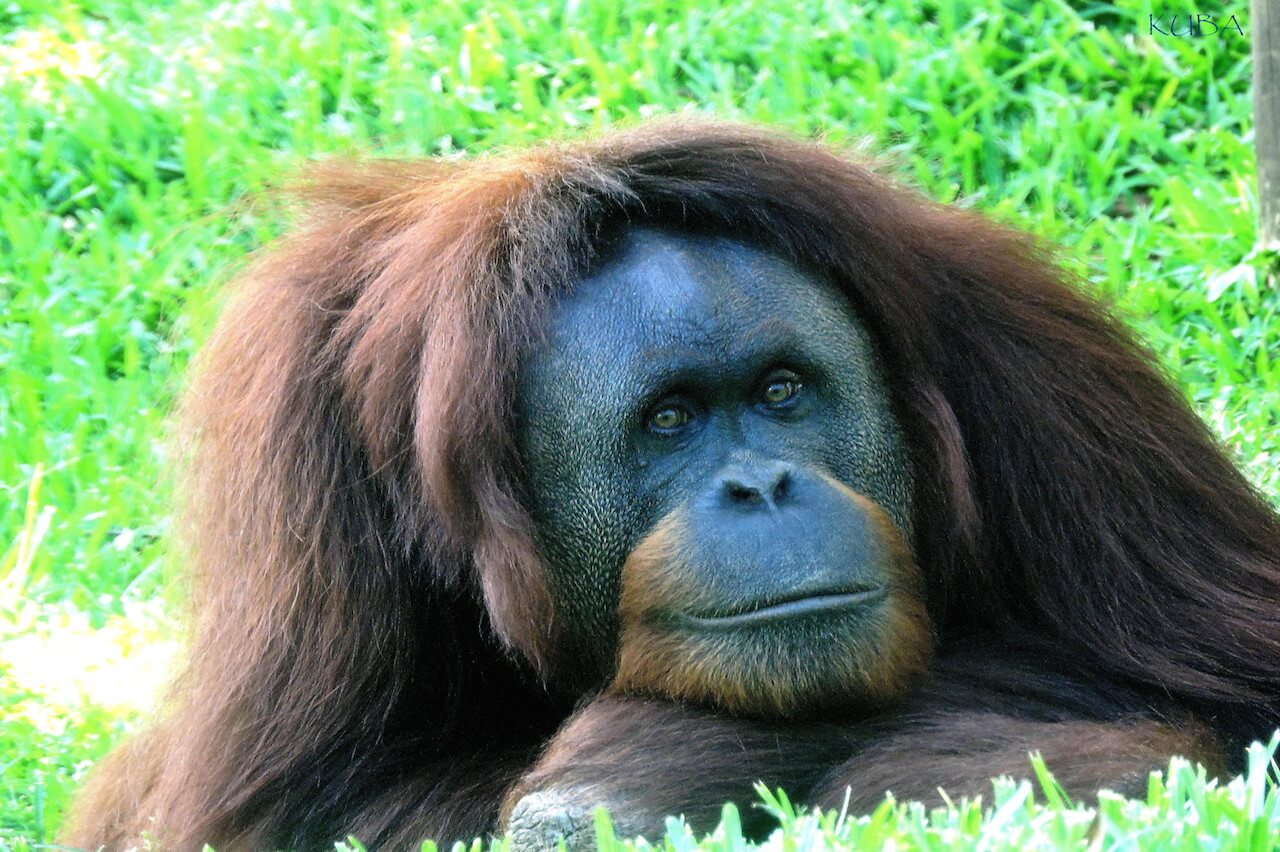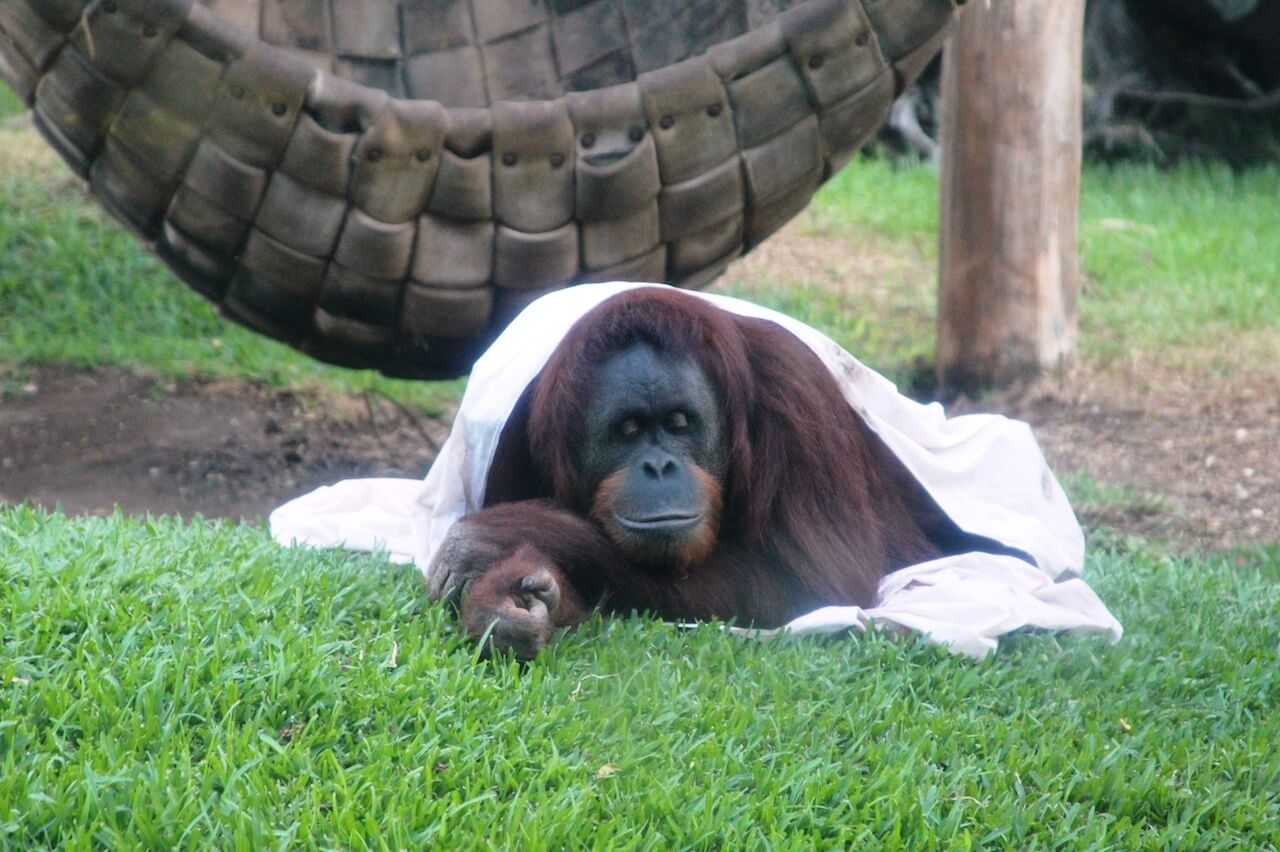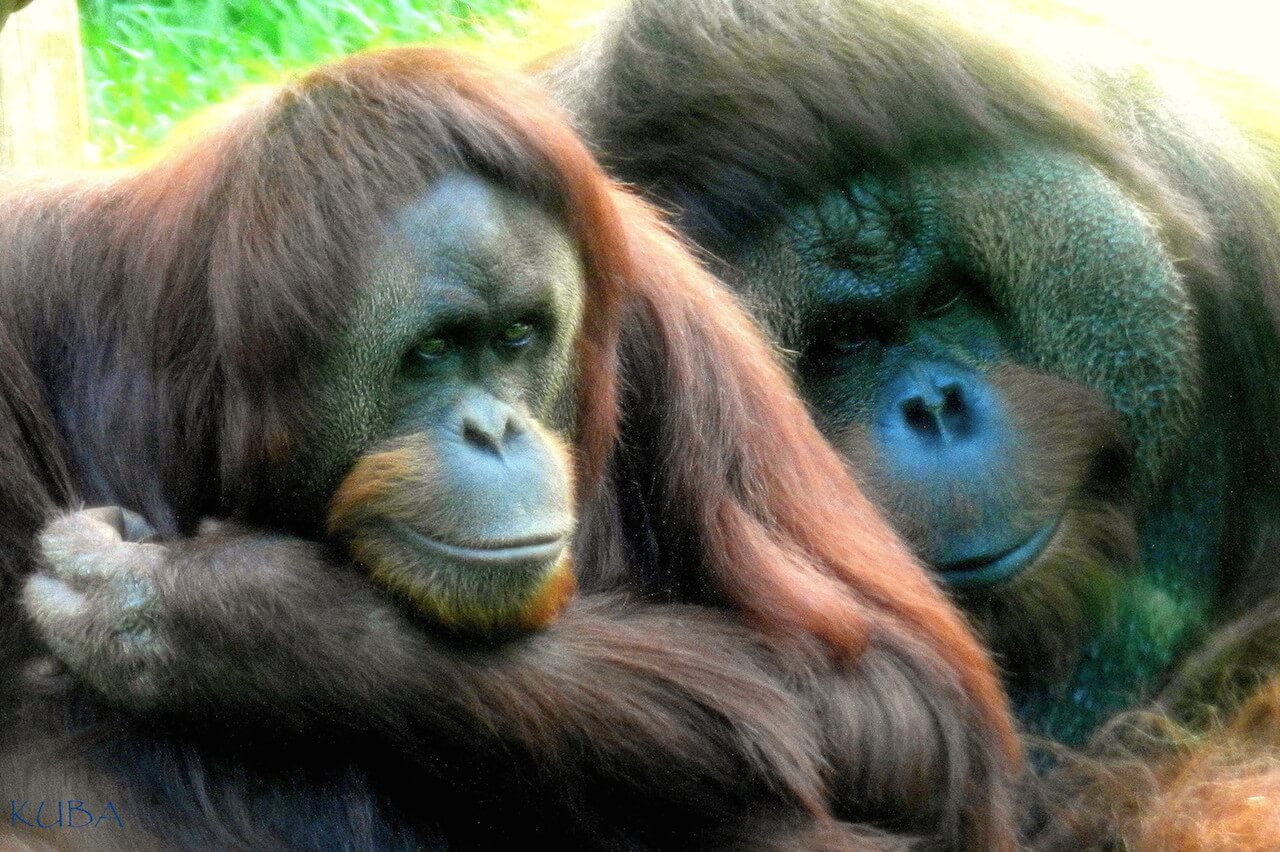pongo
Orangutan
About Me
Scientific Name: Pongo
Description
Modern orangutans originated during the Pleistocene period, 2 million to 100,000 years ago. They now face extinction. At the turn of the last century around 315,000 orangutans existed in the wild. Orangutan numbers are now down by 92% compared with a century ago and have been reduced by half in Northern Sumatra between 1993 and 2000.
Fun Facts
- Fossils from a million years ago indicate that there were giant sized orangutans in Indochina.
- Adult male orangutans will make a booming long call several times a day, that along with a number of possible functions, keeps subordinate males away.
- Kingdom: Animalia
- Phylum: Chordata
- Class: Mammalia
- Order: Primates
Modern orangutans originated during the Pleistocene period, 2 million to 100,000 years ago.
They now face extinction. At the turn of the last century around 315,000 orangutans existed in the wild. Orangutan numbers are now down by 92% compared with a century ago and have been reduced by half in Northern Sumatra between 1993 and 2000.
The orangutans ancient origin is not agreed upon. One hypothesis says it originated from Lufengpithecus, while another maintains that they originated from Sivapithecus. The fossil record of the living great apes is poor and the orangutan is the only great ape that has a fossil record linking early forms to later forms (there has never been an African fossil found that is related to chimpanzees or gorillas).
However, there is now strong evidence that suggests neither of those species was the ancestor of the orangutan. In a recent discovery (reported in 2002), a team of scientists unearthed a fossil ape (Lufengpithecus chiangmuanensis) in Thailand dating back 10 to 13.5 million years ago. It consists of both an upper and lower jaw with similar dental structure as today’s orangutan and they consider it to be an ancestor of the new form. This discovery would place the development of the earlier orangutan in a similar habitat as today’s tropical forest home on Sumatra and Borneo. More fossils need to be found and studied to complete the picture of its evolutionary history.
Fossils from a million years ago indicate that there were giant sized orangutans in Indochina. Fossils from 40,000 years ago, found on Borneo and Sumatra, show the orangutan as 30% larger than today’s species. It is conjectured that early orangutans may have been more terrestrial than today’s species. However what we see today is a species that has been arboreal for a very long time and has completely adapted physically.
The origin of the word orangutan is derived from the Indonesian and Malaysian words for person (orang) and forest (hutan). Literally it means person of the forest. It is incorrect to abbreviate the word to orang as many Westerners do, because it just means person.
When one thinks of an orangutan what usually comes to mind is the uniquely wonderful rusty-orange hair that covers their bodies and their arms. In general its coat which is sparse, long and coarse, will range anywhere from bright orange in youngsters to a chocolate mahogany in some adults.
The Sumatran species has a thinner, paler coat than that of the Bornean. It is the largest tree dwelling mammal in the world; males at 220 pounds and standing 5 feet tall are twice the size of females.
Their legs are about 30% shorter than their long arms which can grow, up to 6.6ft. (2m). They use both legs and arms to move from tree to tree in the forest canopy. Their feet are designed like hands and their both hands and feet are long, narrow and strong and used in a hook like fashion when grasping branches. The thumb is fully opposable.
The Bornean male has large cheek pads a very large laryngeal sac and his face is square shaped. The Sumatran male has a more diamond shaped face with smaller cheek pads and sac. Genetically they both have 48 chromosomes (compared to 46 for humans); however there are several which are distinctly different that separates them into 2 separate subspecies.
They have massive jaws and their large flat cheek teeth are specialized for tearing, grinding and opening shells.
Orangutans spend their lives in the tropical forest canopy 20 to 100 feet off the ground. It is assumed that one of the reasons for this, is because the tigers would be its main natural predator. However, with the tiger being extinct in Borneo, adult male orangutans will come down and spend up to about 5% of their time on the forest floor. Usually this is to move from one stand of trees to another. Sometimes orangutans, when on the ground, will go into the water (but not to swim).
Considering the large size of the orangutan, movement from one tree or branch to another is graceful and agile, yet slow. An orangutan seldom covers more than mile in a day (1 km). However they have a vast range in which they hunt for their food. Males may use several thousand hectares and females use several hundred. When moving on the ground they are slow and awkward appearing. Because of its arboreal lifestyle with little need to come down from the trees, the orangutan has never learned to knuckle-walk like the gorilla and chimpanzee, instead it fist walks. Staying high in the trees keeps them away from predators such as tigers and leopards.
Orangutans build two nests a day; a sparse one for a short nap and a stronger sleeping nest every night which is constructed from branches with leaves on them, 40 to 60 feet above the ground. The sleeping nest looks like a giant birds nest and on average, only takes about 5 minutes to construct. Babies and juveniles, up to about the age of 8, unless having become more independent earlier, will sleep with their mothers in her nest. Occasionally orangutans will sleep in an old nest. If it is rainy enough, they will fashion a cover to help keep them dry. It is not uncommon to see them holding a large palm frond over their head if it is raining hard.
Adult orangutans on the island of Borneo tend to be more solitary animals than those on Sumatra. They will forage and travel independent of one another and males tend to break ties with their mothers earlier than females. Social relationships are formed by individual orangutans that have regularly overlapping ranges. However that does not mean that there will be any actual social interaction between them when they meet. For example, if several orangutans (not adult males) are seeking out fruit at the same tree they will usually sit apart with little or no social interaction and will leave alone after eating.
Sumatran orangutans, on the other hand, behave more socially toward one another. Except for low-ranking adult males, they will travel together and occasionally bonds will form between low-ranking adult males, but usually male relationships are competitive. The higher degree of social interaction between Sumatran orangutans is a function of the fact that their habitat on Sumatra is more productive than that on Borneo. This productivity keeps the cost of traveling and eating together much lower and therefore the animals can benefit from the social benefits resulting from group life. Researchers point to tool using by Sumatran orangutans as a result of this group life-style.
Adult male orangutans will make a booming long call several times a day, that along with a number of possible functions, keeps subordinate males away. This call will carry over a mile through the dense forest. If by chance a subordinate male encounters an adult male, the subordinate male will be tolerated as long he keeps his distance. However if two adult males meet it will usually result in a violent and aggressive display or actual fight. Orangutans make a number of different vocalizations besides the long call. One of the most well known is the kiss squeak and grumph sound they will make when disturbed. Youngsters will whine when they need help from their mother is doing something. They also make a number of softer sounds to each other that are difficult for researchers to hear. Orangutan also break off weak branches and will throw them down to the ground when disturbed, an action that all field researchers are very familiar with.
The present distribution of orangutans is a fragment of its original range. At one time they could be found throughout much of Southeast Asia, however they became extinct from many areas through hunting and deforestation. Today, the orangutan is found only on the islands of Borneo and Sumatra in scattered populations. They can be found on Borneo (west, east and central Kalimantan), Malaysian Borneo (Sarawak and Sabah) and northern Sumatra. The types of forest include tropical montane, lowland dipterocarp, peat swamp and heath. The highest densities are in the swamp forests.
In the rain forest, food is scarce and the orangutan with its large body has a large appetite. This results in low population densities of around 2.6 animals per sq. mile (1 per sq. km). Near the swamp forests and river valleys with greater resources, densities increase to 18/sq. mile (7 per sq. km).
Orangutans will spend at least 60% of their daylight hours eating and searching for food. They eat over 300 different kinds of fruit, as well as bark, young shoots, insects and an occasional bird egg or small vertebrate. About 60% of their diet is fruit. The strangling fig is a fruit staple when available because it has a large bounty. However a favorite fruit is from the durian tree which is said to taste like sweet cheesy garlic custard. When overripe this fruit can have an overpowering pungent odor. When eating fruits they do not eat the peel, but will eat the seeds that are then distributed through their feces to help in reforestation. If juicy fruit is unavailable they will drink water from tree holes.
Some of the more recognizable food they eat are rambutans, jackfruits, magosteens, mangoes, figs, pandanus leaves, bark, insects, lychees and young shoots.
It is crucial for the baby of an orangutan to be taught by its mother what food to eat, where to find that food, in which trees and during which seasons. Orangutans must possess a great mental map of their food sources in order to survive. Wild orangutans must rely on their intelligence to develop very complex feeding techniques which give them access to foods that are for the most part unavailable to other animals. Tool use plays an important part in accessing some foods.
The lifespan of an orangutan in the wild is from about 35 to 40 years (it is not positively known what the average life span is, in the wild). In captivity they can live to 50 years, though there are some that have lived longer. The Philadelphia Zoo had a pair of wild born orangutans that lived over 50 years.
Orangutans are slow-growing animals and produce probably the lowest number of offspring over a lifetime, of all mammals. A female becomes sexually mature at the age of 10 and will remain fertile for the next 20 years. However they tend not to start reproducing until they are about 15 years of age. The average time between orangutan births for an adult female is eight years. As a result only 3 or 4 offspring are born during her lifetime. Immediately you can see that habitat loss and wild capture for the pet trade impacts the species as a whole, with devastating effects. Males become sexually mature at the age of 12 and as they age, they will begin to develop the cheek flanges or pads and throat pouches that are so impressive by about the age of 20. However a young males growth of the cheek pads may be inhibited if there is a dominant male within his sensory range.
Inbreeding is minimized because males tend to emigrate long distances away from their mothers and sisters. A female that is ready to conceive will seek out the local dominant adult male; this keeps subadult males from mating with her. The benefit of female initiation of courtship and mating is unknown, but it may have to do with protection from subadult males by the dominant male. Cooperative courtship and mating time varies from a few days on Borneo to several weeks on Sumatra. On Sumatra cooperative mating occurs over 50% of the time, whereas on Borneo 90% of the time it is forced mating by subadult males on lone females. Forced mating often results in vicious bites to the female. (This again goes back to the overall differences in habitat productivity between Borneo and Sumatra resulting in more adult lone females on Borneo).
Recent studies in the field have found that females with infants under four years of age tend not to mate. Research has shown that hormone levels in females are strongly influenced by their nutrition status, which is a function of how much fruit is available to them in the forest. If there is an abundant supply of good fruit, the females hormonal level increases, therefore her probability of conception increases.
The gestation period is between 235 and 270 days. A baby orangutan weighs about 3 pounds at birth. Infant mortality rates, due to natural causes, in the wild are extremely low. Orangutan mothers are very good at raising their babies to adulthood. The fact that the mother tends to keep her offspring with her for an average of eight years has everything to do with the low infant mortality rate. Offspring will become completely independent by the age of 10. Infancy is from 0 to 4 years, juveniles from 4 to 7 years, adolescent males from 7 to 10 years and adolescent females 7 to 12 years old.
Infants are carried continuously by the mother for the first year and whenever the mother travels until the age of 4. Mother orangutans are very patient with their offspring and it will sleep in its mothers nest until it is weaned at about the age of 3 to 4 years old. They will often stay near and dependent upon their mother for 7 to 8 years while they learn to navigate through the dense forest in search of the hundreds of different edible foods. Adolescent males usually break ties with their mothers, but adolescent females return frequently to spend time around their mothers.
Other Mammals
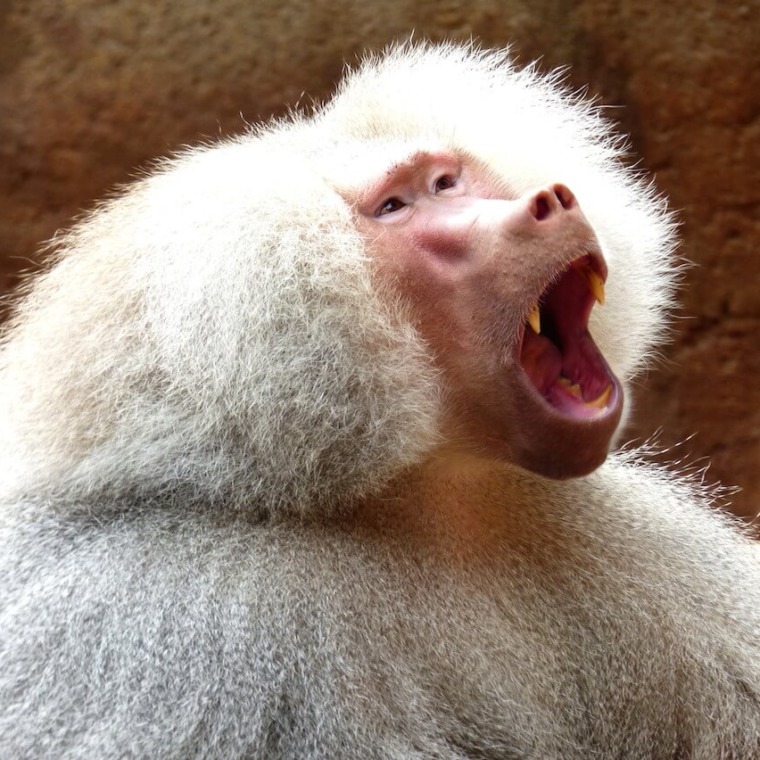
Sacred Baboons are common throughout northeastern Africa, but are extinct in the Nile region and Egypt, where they originally received their name and were worshiped by the ancient Egyptians.
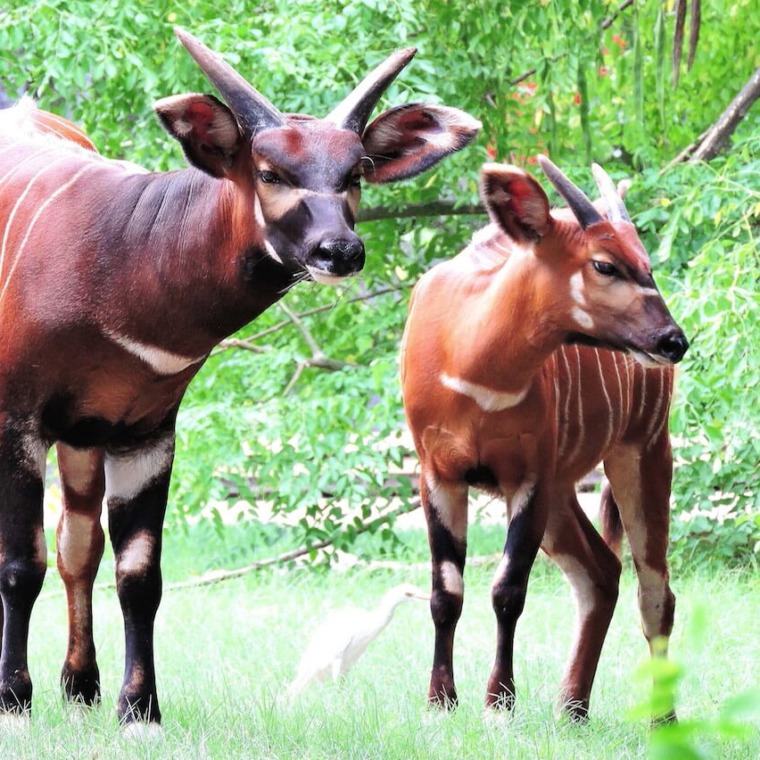
Bongo are most active at dawn and dusk, and often forage near the edges of wooded areas. They normally shy in the wild and flee into the forest for cover at the slightest provocation.
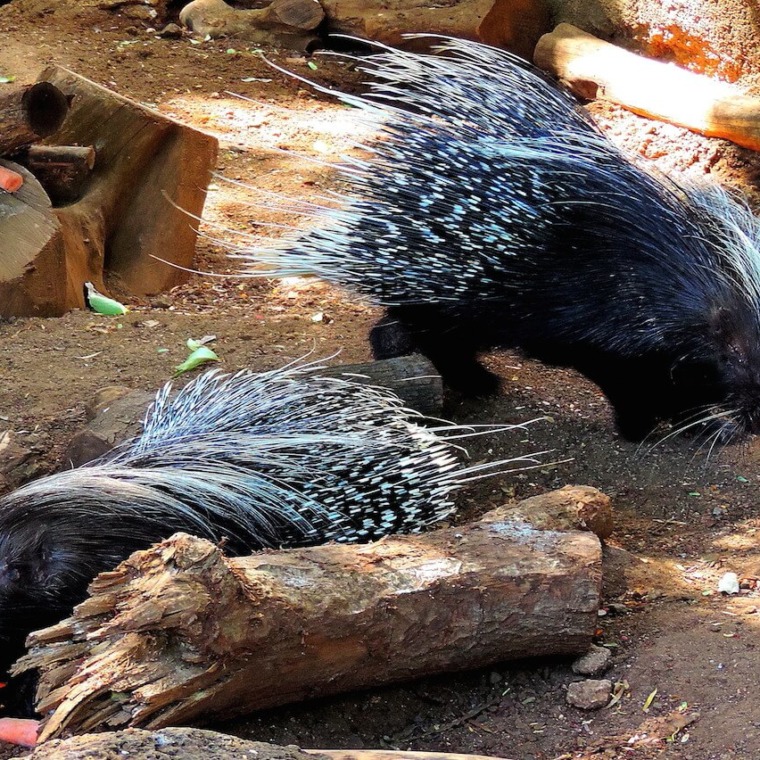
The North African crested porcupine is nocturnal. They are very adaptable and can be found in forests, on plantations, in rocky or mountainous areas as well as in deserts.
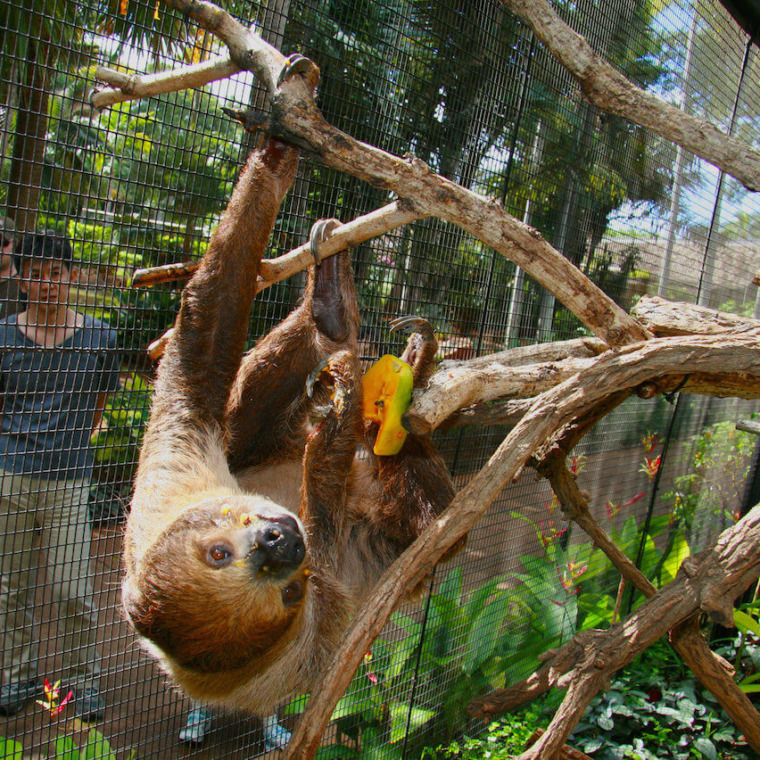
Sloths are found in Central and South America in the rain forest canopy. The Linne’s two-toed sloth is found in such countries as Nicaragua, Columbia, Venezuela, Surinam, Guyana, French Guiana, North Central Brazil, and Northern Peru.
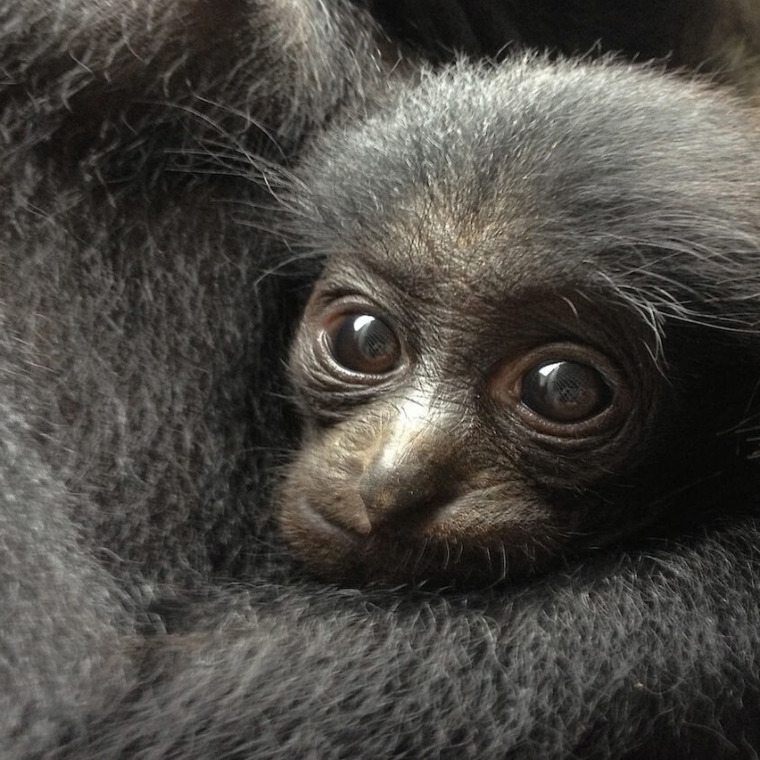
Siamangs range through southeastern Asia and are found in some numbers in the Malay Peninsula and Sumatra.


